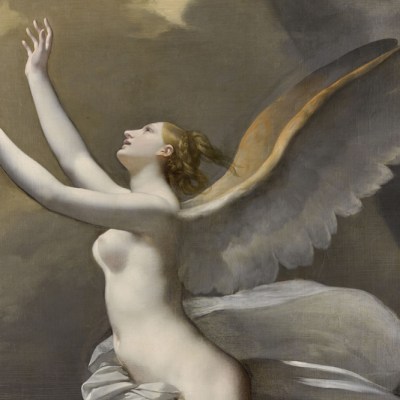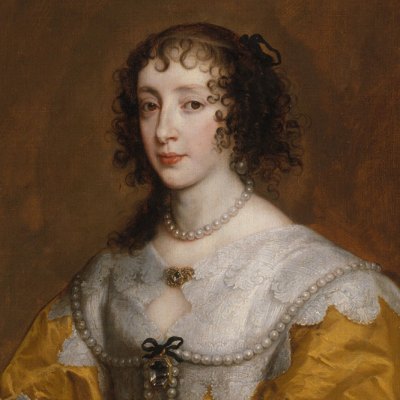A round-up of the best works of art to enter public collections recently
British Museum, London
The Trumpeters (c. 1735–40), Nainsukh of Guler
This exuberant scene of trumpeters was created by Nainsukh of Guler, one of the most celebrated names in the Pahari school of miniature painting in northern India. Its past owners include the painter Winifed Nicholson, who bought it on a visit to South Asia in 1919–20; in 2018 it was placed under export bar by the UK culture secretary, giving the British Museum time to raise the £440,000 necessary for the purchase, with support from Art Fund, the National Heritage Memorial Fund and the Brooke Sewell Permanent Fund.
Bodleian Libraries, Oxford
More than 2,300 photobooks from the Charles Chadwyck-Healey collection
Photographs by Henri Cartier-Bresson, Man Ray and Diane Arbus are included in this vast gift of photobooks to the Bodleian, amassed by Charles Chadwyck-Healey, adding considerable heft to a collection that already includes William Fox Talbot’s Pencil of Nature (1844–46) – one of the earliest examples of a printed photobook. Pictured is a page from Man Ray Photographies 1920–1934 (1934), the Surrealist’s first published monograph.
Page from Man Ray: Photographies 1920–1934 (1934). Photo: © Bodleian Libraries, University of Oxford

Centraal Museum, Utrecht
Granida and Daifilo (1623), Dirck van Baburen
In 1623, the nun Agnes van Hanxelaer left her Cistercian convent near Maastricht, having fallen in love with the Utrecht nobleman Pieter van Hardenbroeck. In the same year, Van Hardenbroeck commissioned this painting from the famous local painter Dirck van Baburen; it depicts the couple in the guise of the Persian princess Granida and the shepherd Daifilo – roles from the play Granida (1615) by P.C. Hooft. The acquisition of the work at auction in New York bolsters the Centraal Museum’s strong collection of paintings by the Utrecht followers of Caravaggio.
Granida and Daifilo (1623), Dirck van Baburen. Centraal Museum, Utrecht

English Heritage
Carrawburgh Roman Fort on Hadrian’s Wall
There are 16 forts along the 73-mile sweep of Hadrian’s Wall. Carrawburgh was home to some 500 Roman soldiers when it was built in the second century AD, who were assigned to defend the frontier of the empire against marauding Scots. Relatively undisturbed by archaeologists, much of the structure of the fort remains underground; legal ownership has now been transferred to English Heritage, making it the first acquisition for the National Heritage Collection since the organisation became a charity in 2015.
Carrawburgh Roman Fort. Photo: English Heritage

German Historical Museum, Berlin
Cain or Hitler in Hell (1944), George Grosz
Grosz made his name in Weimar Germany as an excoriating satirist of Berlin society; he was later deemed ‘Cultural Bolshevik Number One’ by the Nazis, and left Germany in 1933 for the US, where he lived in exile until his return to Berlin one month before his death in 1959. This wartime depiction of Hitler, which Grosz described as showing ‘a Fascist monster, or an apocalyptic beast’, has been purchased by the German Historical Museum with the aid of government funds.
Cain or Hitler in Hell (1944), George Grosz. Photo courtesy DHM; © VG Bild-Kunst, Bonn 2020/GFLP, represented by Lilian Grosz

Metropolitan Museum of Art, New York
Stoneware vessel (1858), David Drake
At the Stony Bluff Manufactory in Old Edgefield, South Carolina, the enslaved potter David Drake made stoneware vessels of extraordinary workmanship, often inscribed with short poems describing their owner and function. ‘When you fill this Jar with pork or beef / Scot will be there; to get a peace’ is carved into one side of the vessel, among other lines. This is one of 40 known surviving ‘poem vessels’ by Drake, and the first to enter the Met’s collection.
Storage jar (1858), David Drake. Photo: The Metropolitan Museum of Art, New York

Musée d’Orsay, Paris
Palokärki (Great Black Woodpecker or Wilderness) (1892–94), Akseli Gallen-Kallela
The bright red crest of a woodpecker punctures the background mass of foliage in this delightful painting, which was completed just as Gallen-Kallela was moving out from under the influence of the French Realist tradition and towards a new, Nordic conception of landscape, infused with folklore and symbolism. Purchased by the Orsay in a private sale, it is the first painting by the Finnish master in a French public collection.
Palokärki (Great Black Woodpecker or Wilderness) (1892–94), Akseli Gallen-Kalela. Photo: courtesy Sotheby’s

National Maritime Museum, Amsterdam
Two tapestries by Willem van de Velde the Elder
Commissioned by James II of England from the Dutch weaver Willem van de Velde the Elder, these two tapestries are part of a series of six commemorating the Battle of Solebay, fought in 1672 between the naval powers of England and the Netherlands. They were split up for sale in 1914; these two, the last that remained in private hands, have now become the largest acquisition in the history of the National Maritime Museum (Het Scheepvaartmuseum).
The Burning of the Royal James (Later in the Day) (after 1685), Willem van de Velde the Elder. Courtesy Het Scheepvaartmuseum



